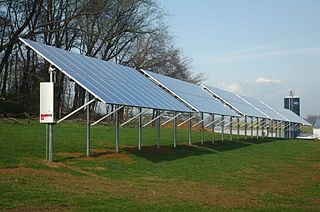From Guest Blogger Ken: Photovoltaic Energy: It’s All in the Light

Photovoltaic Technology
Panels that collect solar power are actually collecting the light itself and turning into energy. It’s based on the same principles of photosynthesis for plants – hence the name “photovoltaic.” Essentially, a strong enough light source would be able to sustain energy levels whether there is cloud coverage or if it’s night. The reason why humans utilize the light of the Sun is because we simply have not developed a self-sustaining lighting system that can produce as much intense light without consuming power to do so.
Consumption of Fuels
Creating power from the Sun doesn’t consume resources that we invest in. While skeptics will point out that the Sun is consuming hydrogen in order to produce light, it is a consumption that we are not directly responsible for or have a cash dollar amount tied to. It is a natural occurrence that will continue to produce light until it destroys itself in several billion years. At which point, converting light into power from the Sun would be a moot argument as this planet would be ultimately doomed.
Using Light Bulbs
What about photovoltaic power without the inclusion of the Sun’s light? Is it possible to duplicate the intensity at a low cost to ourselves in order to create a self-sustaining photovoltaic alternative that produces energy non-stop? The prospect may not be as unbelievable as you would think. Using an inexpensive $12 “solar” panel from places like Radio Shack, you can duplicate the same amount of power at night as it would produce during the day. When held at roughly one inch from the panel itself, a 60 watt compact fluorescent light bulb can produce an identical result of providing power.
Energy vs. Production
Does this mean you can power solar panels with CFL bulbs? Possibly. Although the power generated in order to activate the bulb is much higher than what a small panel can produce, it lends credence to the idea of using other forms of light for energy. Essentially, humans would have to develop a bright enough light bulb that can operate at a very small voltage. If this is possible, the panel could provide power to the bulb while delivering a greater amount to the grid. Although it may sound more like science fiction than reality, anything is possible.
Any Light Will Do
Virtually any light source can be used to generate electricity. Using that same $12 panel, you can collect power from nearly any source that produces light. Whether it is LEDs in a flashlight or an incandescent bulb in a lamp, it is possible to generate power. Even the light produced from an LCD computer monitor can generate around two volts of electricity provided you have the panel against the screen. Yes, turning up the brightness on the monitor can be measured if you have a voltmeter.
Wasted Power
Every time you flip on a light switch, you are transmitting a method of power. There isn’t a real practical implementation to take advantage of this power aside from charging your cell phone battery throughout the night. However, the implications that it’s possible should warrant more investigation in develop a more ideal way to put this power to use. Instead of a light bulb being our primary mode of sight in dark areas, it can quite possibly be the saving grace for improved ways to use photovoltaic cells.
If you’d like to perform your own experiments regarding photovoltaic power, the entire setup would cost you less than $50. What you’ll need is:
- $30 Klein Tools voltmeter MM200
- $12 Solar panel cell from Radio Shack
- and the light source of your choosing
As these cells are not designed to generate a great deal of volts or amps, it is perfectly safe to experiment with them without fear of being electrocuted. This could be a fun project with the kids as you determine how humanity can use any light to create power.
Author Bio:
Ken holds a master’s in business leadership from Upper Iowa University and multiple bachelor degrees from Grand View College. As president of morningsidenannies.com, Ken’s focus is helping Houston-based parents find the right childcare provider for their family. When he isn’t working, he enjoys spending time with his three children and his wife.
